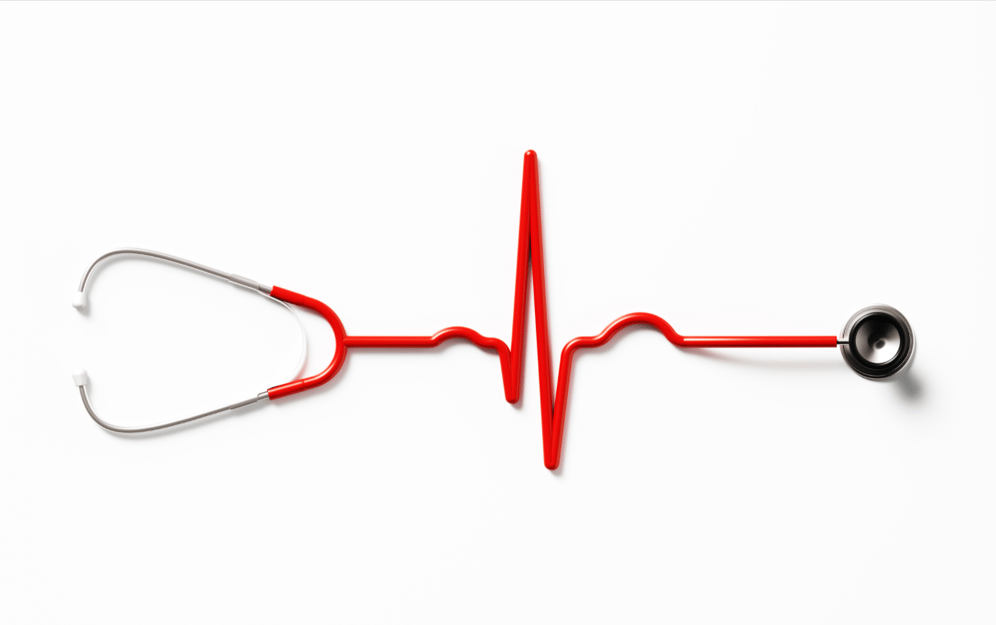Beyond the EKG: A Quick Guide
By Guest Blogger, Marci Farquhar-Snow, M.S., CCRN CMC A.C.N.P-BC AACC
The EKG spits out of the computer. You read the top few lines printed by the computer. Should you base your diagnosis on the printout? Performing an electrocardiograph (EKG) assessment is important to monitor beyond just reading the computer generated numbers, especially in patients with a previous cardiovascular diagnosis, diagnostic study, or procedure that showed a positive or significant results. In addition, attention should be given to those patients with comorbidities at a higher risk for developing cardiovascular disease including: hypertension, diabetes, obesity, smoking, or chronic kidney disease. An EKG may also be indicated for those who are prescribed medications or ingest over-the-counter (OTC) substances that have the potential to interact with the electrical conduction of the heart.
The EKG can indicate quite a bit about the patient’s past or current cardiac health. It is important to obtain the baseline EKG from the provider who initially diagnosed the cardiovascular condition when monitoring and evaluating any progression. Let’s review some EKG basics that delve into potential pathological conditions rather than just memorizing mnemonics or rhymes. This method will help you determine diagnoses and treatment plans.

Waveforms
An EKG is read like a book from left to right. The progression of waveforms: P, Q, R, S, T reflect the electrical conduction as it starts at the top of the heart at the sinus node, housed by the right atrium, and then travels towards the bottom of the ventricles. To understand how a diagnosis is related to heart chambers, look for clues in the corresponding waveform described below.
Normal values vary somewhat, but based on the normals values for each basic waveform at your institution:
- The height or amplitude (millivolts or mV) represents the umph or strength the heart cells generate in that particular conduction pathway direction or lead placement on top of the heart. Too low value, the cells are weak or heart muscle mass low to generate voltage. Too high value, the cells are producing a strong force or the heart muscle is thickened.
- The length or duration (milliseconds or mS) represents how long it takes for the cells to take action. Too slow, the heart won’t consistently circulate enough blood to organs. Too fast, the heart can’t keep with the demand of filling up with blood and pumping action efficiently.
P wave (normal 120-200 mS)
Represents the electrical charges from the sinus node to the AV node including the atria. The first portion of the P wave shows the right-sided activity, the last portion the left-sided activity. These chambers are normally small and thin, thus smaller in size and amplitude than the ventricles represented by the QRS wave. Too high or long indicates elevated pressure, volume or size. Generally, a bigger on the right side of the P wave relates to the right atrium or pulmonary side as in COPD; bigger on the left side related to left atrium or systemic side as in hypertension or heart failure. Too low indicating lower size or not conducting efficiently as in atrial fibrillation.
Q wave (normal < 40 mS or >25% of total QRS height)
Represents the electrical charges in the septal muscle between the atria and ventricles. Too long indicates a longer duration to travel down the septal wall such as thickened muscle in an athlete or poorly conducting as in dead or infarcted muscle.
QRS (normal 60-110 mS)
Collectively the QRS represents the electrical depolarization from the AV node to the ventricles.The height or amplitude of the R-wave (the largest umph from the ventricular contraction) should normally increase as it travels from leads V2 to V4 to reflect normal direction of blood flow and muscle contraction. Certain changes can occur if the blood flow is interrupted. A decrease in the amplitude of the R wave indicates a loss of muscle function such as ischemia or accumulation of air, fluid, or fat under the electrode position as in COPD, myocarditis, or obesity. Increase in heart muscle size or hypertrophy may be shown by an increase in amplitude of the electrical charge. Heart blocks, premature ventricular beats (PVCs) or arrhythmias displayed as downward (negative) wave in V5-V6 can interrupt or delay normal conduction by lengthening the mS or time to travel when contracting (depolarizing) before the next heartbeat.
QTc (normal men <450 mS, women <470 mS))
Represents how long it takes for the heart to contract and then relax (repolarize). Too long may indicate sluggish relaxation due to electrolyte imbalance related to body fluid composition, or interactions with medications or substances ingested. hyperthyroidism, or weakened ventricular function as in myocardial ischemia.
S wave
Represents the downward electrical charges in the opposite direction of the R wave immediately proceeding it. Therefore, while normal R-wave amplitude progressively increases from leads V1 to V4, the S wave amplitude if present should normally decrease going from lead V1 to V6. Abnormal S waves in V5-V6 represent a rerouting of electrical charge toward the stronger functioning cells above the bottom of the ventricles such as what is seen in bundle branch blocks (BBB). Conversely, if S waves are present in V5-V6, add the length of the S wave in V1 and the R wave in V5. If the total is >35 mm, consider ventricular hypertrophy from chronic hypertension, or other cardiovascular conditions.
T wave (abnormal height of T wave >5-10mm or ST elevation >1 mm or depression >0.5 mm)
Represents the heart to relax and get set for the next heart beat. A delay or increase means electrical charge has been interrupted by a decrease in blood flow or muscle strength. T wave morphology changes when action potentials are effected by electrolyte in diet or medication, or loss of activity in dead infarcted cells.
Leads
Which leads are the best to monitor? Consider the waveforms or chambers you want to view :
Supraventricular (above the AV node) diagnoses:
i.e. atrial fibrillation, atrial flutter, first- or second-degree heart blocks, Wolf-Parkinson-White syndrome, atrial enlargement with elevated pulmonary pressures or chronic hypertension
In general, limb I and precordial leads V1 or V2 show the optimal direction of electrical charges as they travel throughout the supraventricular conduction pathways and the atria before heading towards the bundle and ventricles.
Ventricular (below AV node) diagnoses:
i.e. normal heart rhythm, ventricular tachycardia, premature ventricular beats (PVCs), ischemia or infarction, ventricular hypertrophy, bundle branch blocks
In general, limb lead II and precordial leads V5 or V6 show the optimal information regarding the direction of electrical charges traveling towards the pumping action of the left ventricle. V1-V2 electrodes are located on top of the right ventricle as well as upper chambers so S waves can assist in differentiating ventricular conduction patterns.
Key Points
An EKG is a good monitoring tool when considering changes or progression in the cardiovascular health of your patient. Rather than judging a diagnosis by a single lead, a 12-lead EKG is more reliable for multiple perspectives. Always compare prior to current EKGs to detect significant changes. A cardiology specialty consultation may be indicated if you need further clarification or diagnostic evaluation.

Marci Farquhar-Snow, M.S., CCRN CMC A.C.N.P-BC AACC. has been a nurse for over 30 years. She is board certified, licensed in the states of Arizona and California as an Acute Care Nurse Practitioner. Over the years, Marci has worked in multiple aspects of cardiovascular care in the inpatient and outpatient settings including critical care, clinical education, program development, and research. Previously, Marci practiced at the Mayo Clinic as a Cardiovascular Nurse Practitioner in outpatient interventional cardiology clinic. She developed and is the Past Program Director for the Cardiology Nurse Practitioner Fellowship at Mayo Clinic that is accredited by ANCC at a PTAP program. Marci has presented at local, national, and international conferences on a variety of cardiovascular clinical topics and education related topics, and is a frequent speaker for ThriveAP. She is actively involved in many committees of the American College of Cardiology and is the national chair of the Cardiovascular Team State Liaisons.

